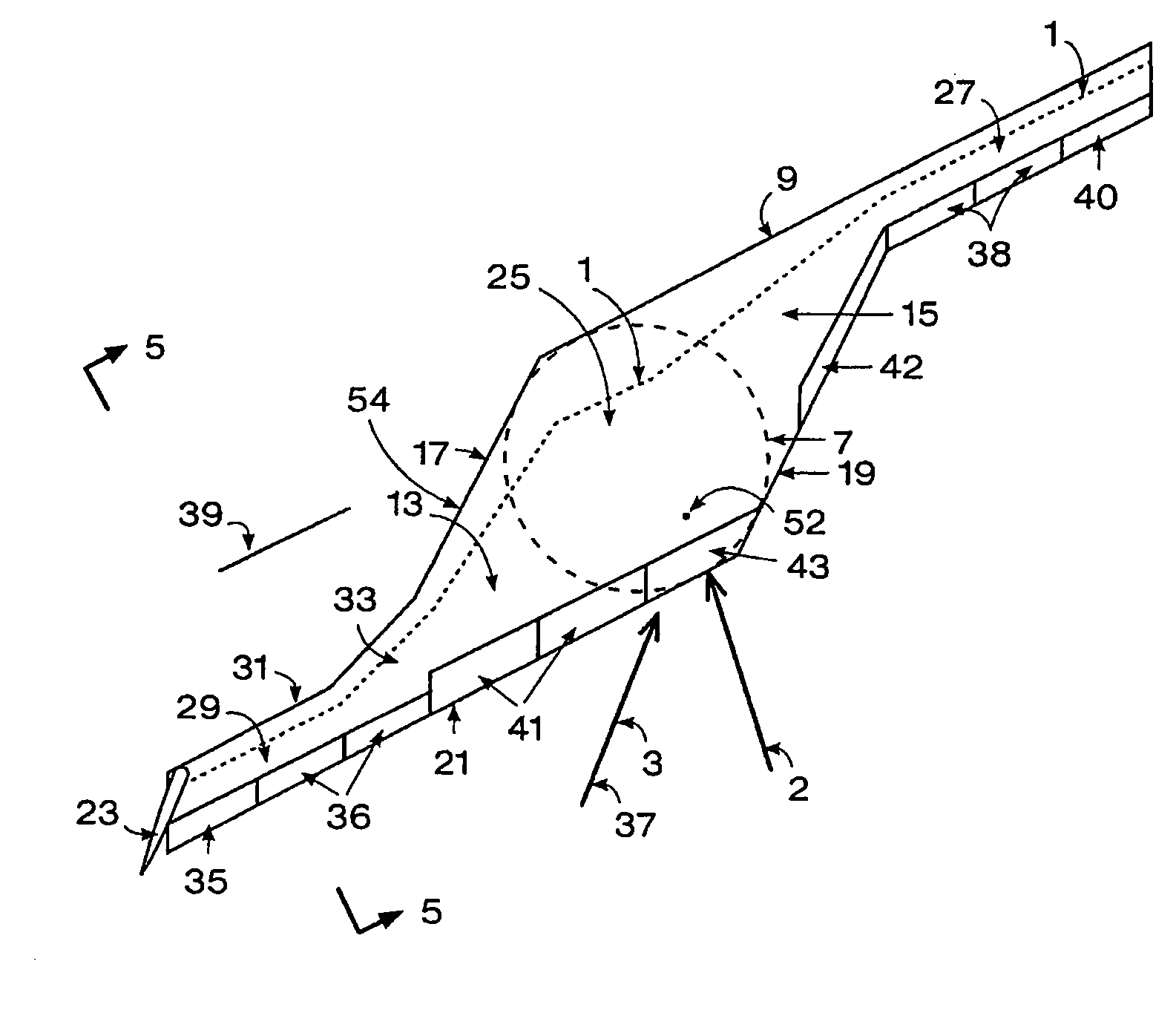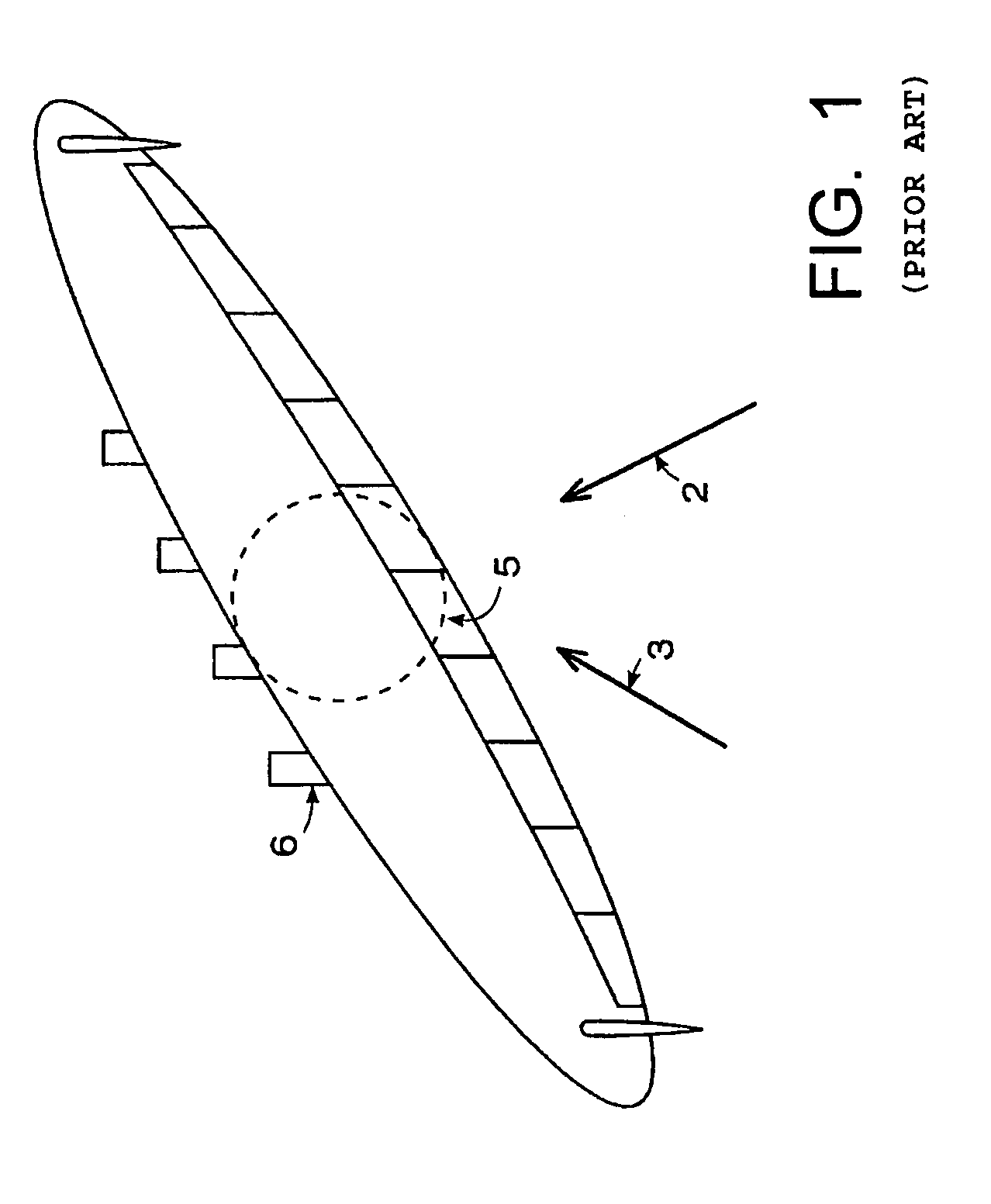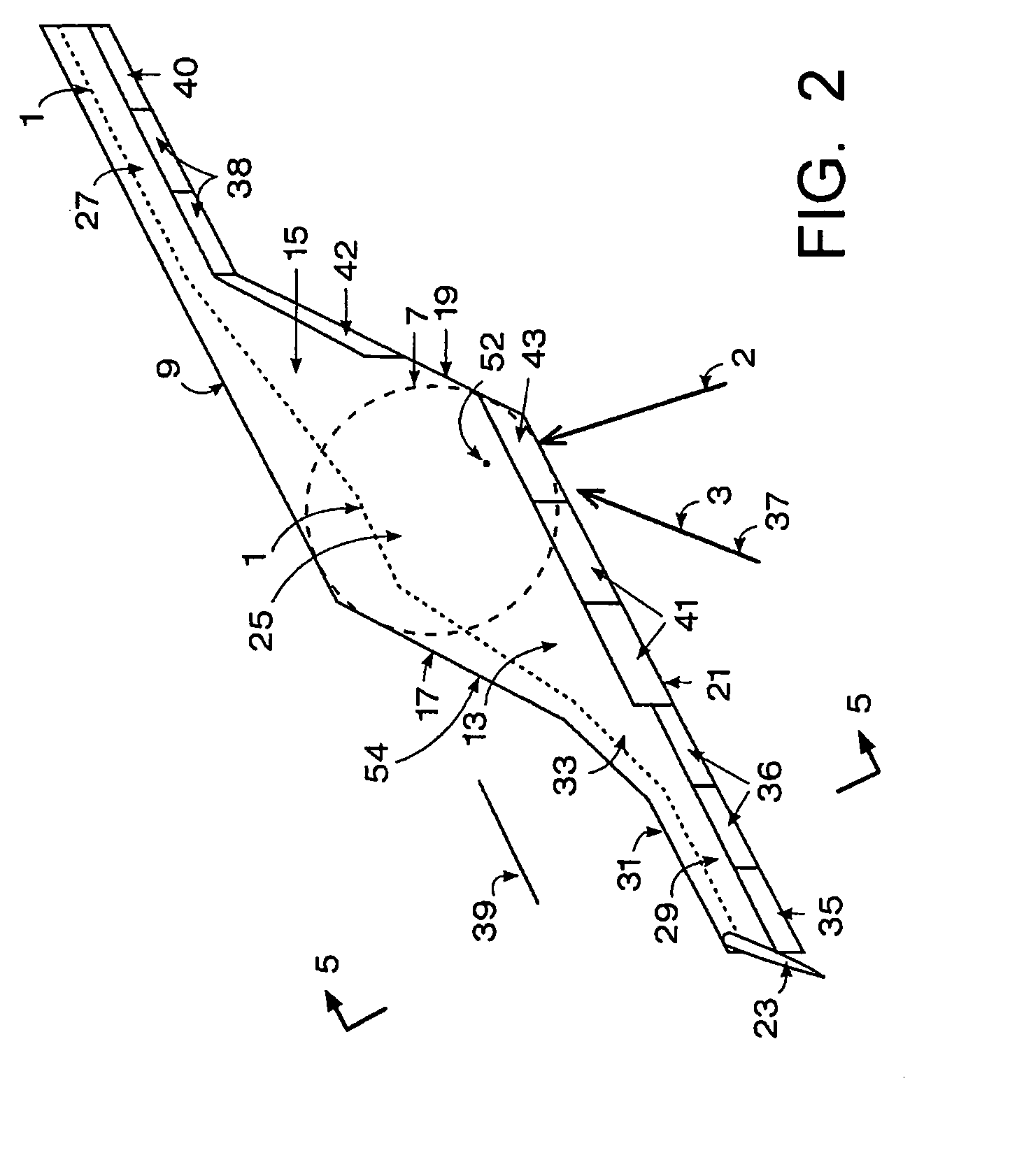Oblique blended wing body aircraft
a blended, aircraft technology, applied in the field of flying objects, can solve the problems of difficult integration of the engine into the wing, large surface area, and high friction drag of the skin, and achieve the effect of low compressibility drag and low wetted area
- Summary
- Abstract
- Description
- Claims
- Application Information
AI Technical Summary
Benefits of technology
Problems solved by technology
Method used
Image
Examples
Embodiment Construction
[0015]Referring to FIG. 2, a center airfoil section, called herein the “center body”25, is designed by starting off with a circle 7 as shown in dashed lines at the center of the aircraft planform. Tapering transition areas 15 and 13 are added on either side of the circle to form left and right sides of the center body 25 and a forward swept wing 27 and an aft swept wing 29 are then attached to the center body 25 as shown in FIG. 2 plan view. The center body 25 is itself a wing segment with airfoil cross-sections. The forward swept wing 27 preferably has a leading edge 9 that is an extension of the leading edge of the center body's forward swept transition area 15. The aft swept wing 29 has its aerodynamic center behind the pitch axis 39 so it is helpful in stabilizing the vehicle in pitch about the pitch axis 39. The pitch axis 39 for this configuration is defined parallel to the quarter chord of the forward swept wing but passing through the vehicle center of gravity as shown in FI...
PUM
 Login to View More
Login to View More Abstract
Description
Claims
Application Information
 Login to View More
Login to View More - R&D
- Intellectual Property
- Life Sciences
- Materials
- Tech Scout
- Unparalleled Data Quality
- Higher Quality Content
- 60% Fewer Hallucinations
Browse by: Latest US Patents, China's latest patents, Technical Efficacy Thesaurus, Application Domain, Technology Topic, Popular Technical Reports.
© 2025 PatSnap. All rights reserved.Legal|Privacy policy|Modern Slavery Act Transparency Statement|Sitemap|About US| Contact US: help@patsnap.com



